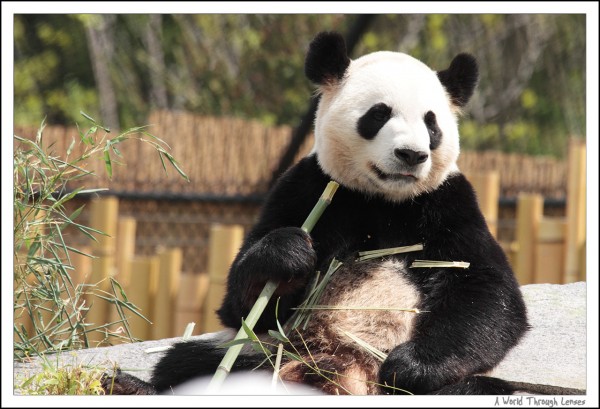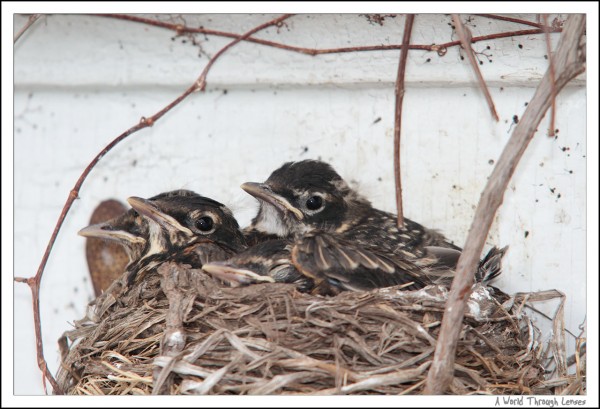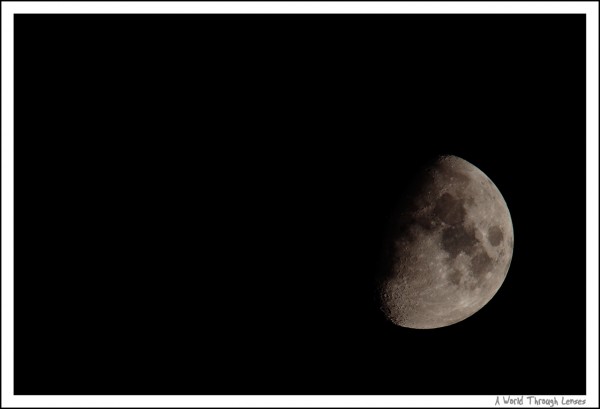Today the Metro Toronto Zoo opened their Giant Panda exhibit as an member’s only event. Tomorrow May 18th 2013, the exhibit will be officially opened to the public. Even though I have always been a zoo member for all these past years, I haven’t been at the zoo for a long time. However, this time for the pandas, I put my busy work schedule aside for a little bit and gave them a very quick visit.
|
|||
|
A pair of American Robin (Turdus migratorius) has built its nest under my neighbour’s porch. It wasn’t high and I can get a good leveled view if I climb up on a ladder. So that created the perfect opportunity for me to take some good photos of the nesting bird. American Robin is probably the earliest bird to lay eggs. Due to the weather, I didn’t have a chance to take photo when the bird just hatched. But now that the week worth of raining weather is over, I can take some photo of the now much bigger juveniles. So here’s the nest, I can see four beaks there.
This is another one of my figure/doll photography 121 post. A few months ago, I’ve posted an article on how to produce a true black background without the use of any black background material and/or image editing software. I wrote about the black background because I find most people does not know how light works its magic in a photography sense. The people I talk to tends to instinctively come to the conclusion that if a photo’s background is black, then there must be something black behind it. If you have read my article, then you would see that a true black background actually resulted from a lack of light coming towards to your camera. Today I want to look at the opposite side of the gray scale — how to produce a white background? Well again a lot of people instinctively think that a white background is the result of placing some kind of white material behind the subject. Below is a photo that I took in front of a white fabric backdrop. However, when compared to the white frame that borders the picture, you can clearly see that the actual background is not 100% white. In fact if you load it into an image editing software, you will see that the background is somewhere between 96% – 92% on the gray scale. On the gray scale there’s only one white point which is at the very end of the gray scale. Anything that’s not 100% on the gray scale, or 255, 255, 255 in RGB value is not pure white. And 255, 255, 255 RGB value is what the background must be if we were to call it a true white background. Anything less is just a different shades of gray. Continue reading ‘Figure/doll photography 121 – How to produce white background’ » Last night the sky was clear with no cloud coverages. My friend and I drove to a farm near Pickering and did some star gazing. I brought my camera gears along to do some simple astrophotography. First easy target for the camera is the moon. I’ve posted my photo of the first full moon of year 2010 before. Beautiful as the full moon is, it is actually too bright and does not have enough contrast on the moon surface to see some of the craters. A new moon will actually offer much better details than a full moon because of the contrast provided by the shadows on the moon’s surface. Last night is 2 day past moon’s first quarter, the moon is actually about 57% full. However it still offered enough shadows on the moon’s surface so that some more details can be seen. The same gear as the last moon shot was used. Canon EOS 7D was coupled with Sigma 100-300 F4 & Sigma 1.4x teleconverter all sitting on the Manfrotto 055 Pro tripod. This gives me a relative stable platform for the camera and an equivalent focal length of 672mm. The following photo was shot at ISO 100, F11 @ 1/100th second. This is another figure/doll photography 121 post. I’ve heard from many people as well as seen from many forum posters that they can’t seem to get sharp images for their figure/doll. Some of these people simply didn’t know to use the macro focus mode on their point and shoot camera. However, a lot of them are new users of D-SLRs or have switched from point and shoot digital camera to D-SLRs. In this post, I’d like to explore some of the difference between a point and shoot digital camera and a D-SLR that may cause new and unfamiliar user to get blurry photos. I will also explore a few things on the D-SLR and are specific to D-SLR that may cause blurry photos. I will be using nendoroid, standard PVC figure, as well as doll as my subject. As usual all photos in the post have higher resolution images linked so click on the thumbnail to see better details. Be aware, this post is image heavy and may take a bit longer to load. Continue reading ‘Figure/doll photography 121 – Blurry photos – How to tame the focus’ » |
|||
|
Copyright © 2024 Viper Info-Tech Solutions, Inc. All Rights Reserved. (Posts RSS | Comments RSS) Powered by WordPress & Atahualpa |
|||




